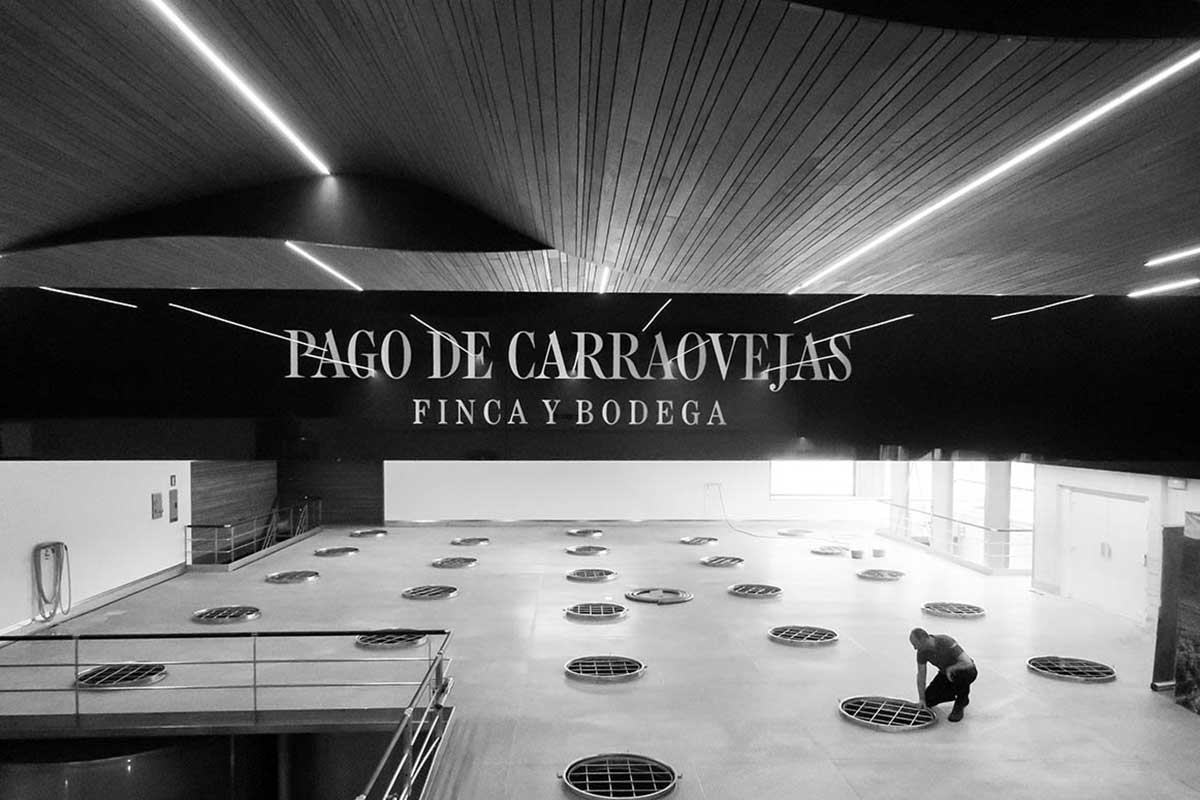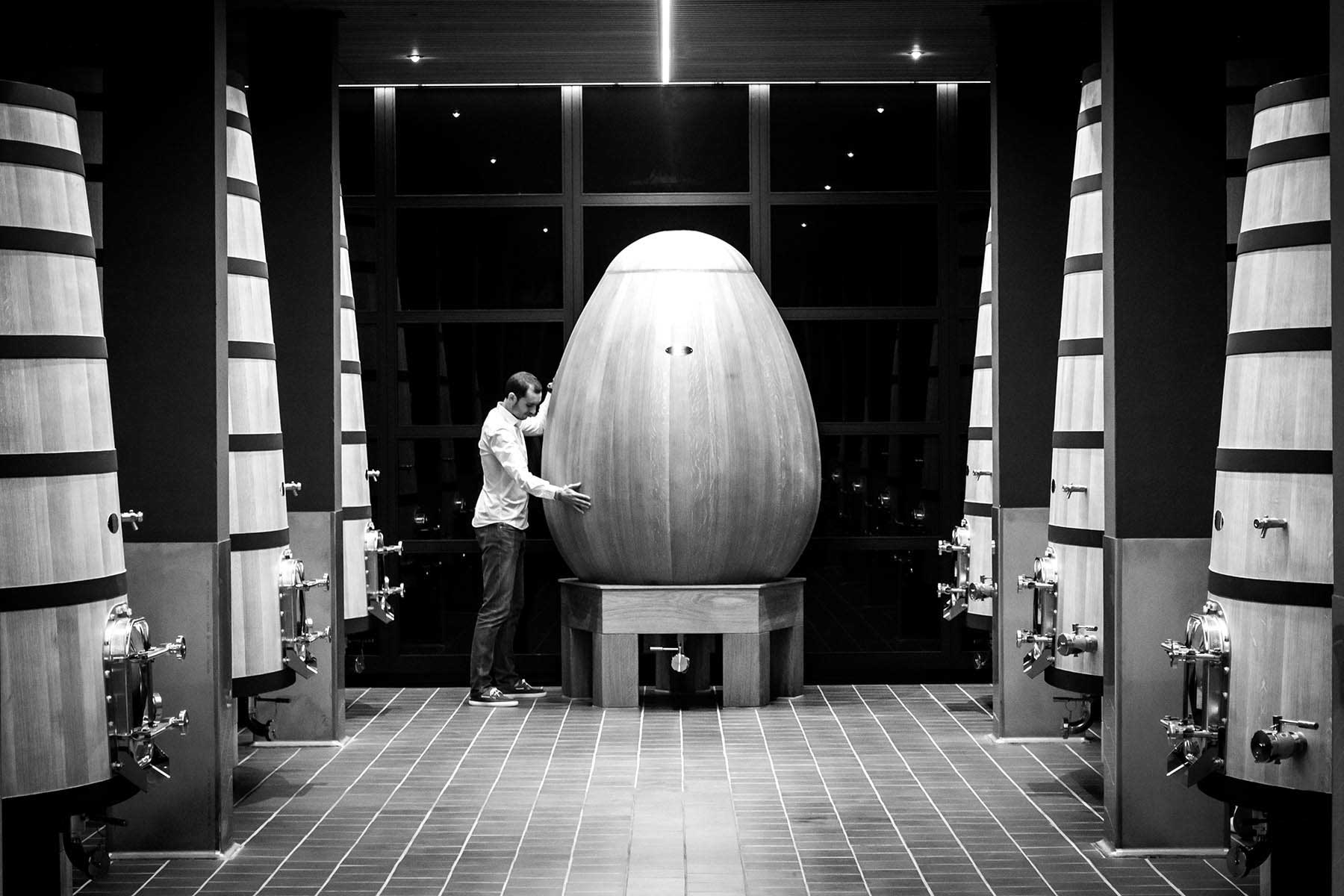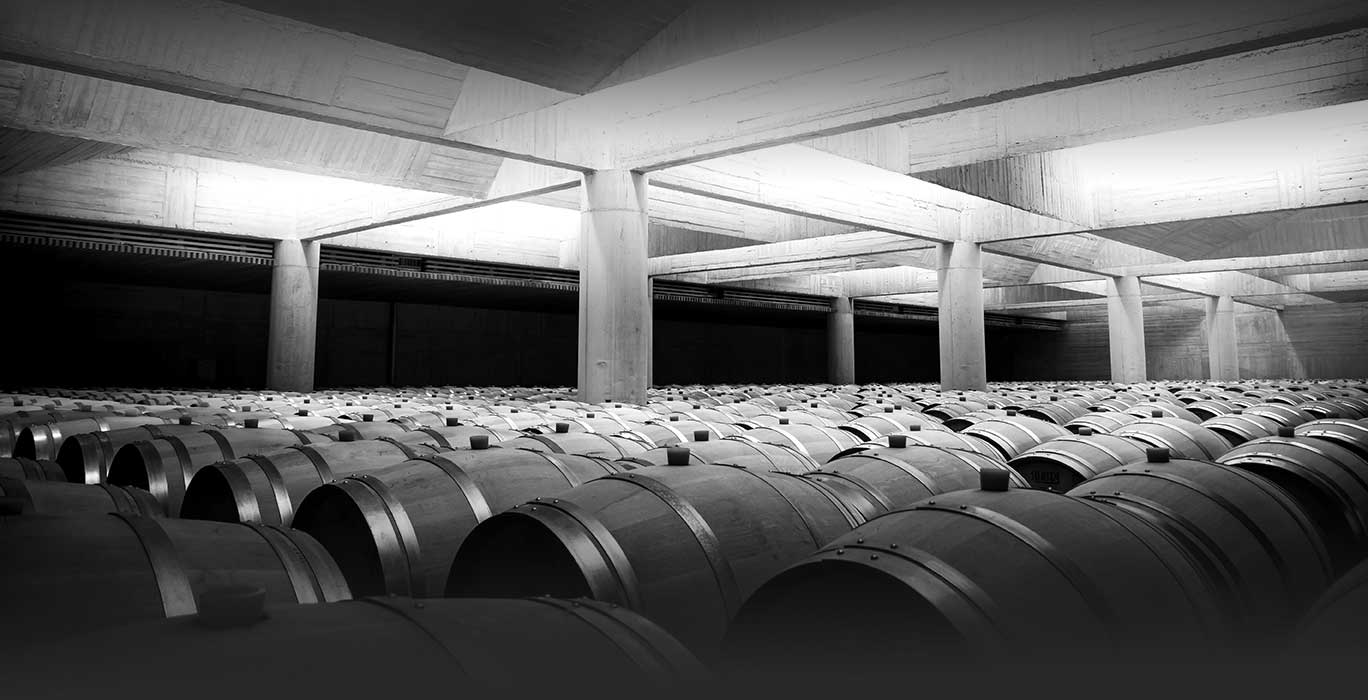WINERY
Seriousness and extreme care
wine production in CARRAOVEJAS
“Latent spring beats always in the heart of winter. Darkest night is always followed by a smiling dawn.”
Khalil Gibran



01 Fermentation process
Our innovative fermentation process is unique to our winery. Designed by the enologist Basilio Izquierdo in the Rioja wine region, and adapted to our Ribera del Duero facilities, this novel overhead filling system comprises a small tank called IFO (Identified Flying Object) that is filled by gravity and then hoisted by a gantry crane that maneuvers it to the mouth of the tank to be filled.
Before entering the winery, the grapes spend the night in chilling chambers especially designed to attain the right humidity and temperature, so the fermentation process can begin at 5ºC, the ideal temperature to preserve the properties of the grape needed for a slow and controlled fermentation.
Our concern for preserving the physical qualities of the grape is reflected in how we move and convey our cargo. We do not use systems that put pressure on the paste, such as pumps or pipes that cause thegrape skin to rupture before it can reach the fermenting tank.
The harvested grapes reach the winery in small crates and go through the grading table traveling on a conveyor system to the de-stemming stations before going into the IFO that is hoisted and positioned over each tank to let the grapes gently fall by gravity.
The fermentation room contains both stainless steel tanks specially designed for a more efficient maceration process because they have a larger area for the head to surface, and French oak vats with 150 Hl holding capacity for alcoholic fermentation and 200 Hl for malolactic fermentation. The French oak vats tanks are fitted with state of the art control technologies that allow us to monitor closely the alcoholic and malolactic fermentation and lavish our attention over every detail of the process.
The barrel fermentation room is also equipped with advance technology. We use the aforementioned gravity conveyance systems to preserve the raw material, transported in small IFO’s traveling overheadto deliver its precious cargo to each tank where the wines will complete the fermentation process, particularly the El Anejón de la Cuesta de las Liebres and our famous Pago de Carraovejas Cuesta de las Liebres.

02 Microecosystems
“The taste and qualities of the wine depend to a large extent on the specific nature of the yeasts that develop during fermentation.”
Louis Pasteur «Études sur le vin», 1875
In Pago de Carraovejas the grapes are fermented solely with native yeasts and bacteria specific to our terroirs that have been enologically profiled and selected for their capacity to bring out the best qualitative potential of the resulting wine for each type of vinification process.
The microorganism selection process is a meticulous and slow process. Started in 2004, it has allowed us to make our wines using exclusively yeasts and bacteria native to our land. We have registered our strains in the Spanish Collection of Standard Crops (Colección Española de Cultivos Tipo (CECT).
Our native microbiota is largely responsible for the unique characteristics of our wines. The yeasts and bacteria used to ferment our grapes are an indissoluble element, with soil and vine, of the wealth of the land of our Estate, and give our wines personality, essence and originality.

03 Ageing
“He that can have patience can have what he will.”
Benjamin Franklin
In addition to prime raw material, the wine ageing process requires the barrels to be made of exceptional wood. This is another area where our winery has invested a lot of thought and resources. Each of our more than 3000 oak barrels has been individually selected after trials and tests runs at the facilities of the barrel makers and at our winery. We are proud to have an exceptional selection of extra fine grained oak barrels.
The barrels are piled one layer thick only to facilitate the filling and testing tasks that are done throughout the ageing process to ensure perfect sanitary conditions.
The wines go through new and semi-new French and American oak barrels that we use for three years at the most.
The ageing process may last between twelve and twenty-four months depending on the type of wine. The organoleptic tastings done throughout the process will determine the final embodiment of the wine as Pago de Carraovejas, El Anejón – for certain vintages – and for the Cuesta de las Liebres when we have exceptional harvests.
After their time in the barrel the wine is clarified with natural egg whites and Bottled: always in the spring. The wine remains in the bottle for a further six to twenty-four months.
Depending on the characteristics or each vintage we produce around 850,000 bottles for the national and international markets.



